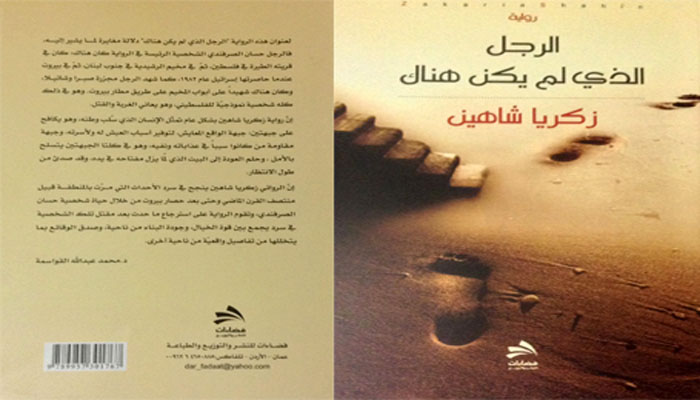
Afrasianet - Hashem Ghraibeh - It is the tragedy of Palestine hidden in the silence of a man who witnessed his era. It is the biography of Hassan al-Sarfandi, the Sarfandi of construction and the Sarfandi of destruction. The Sarfandi of detention and the Sarfandi of the camp. The Sarfandi of the brave fighters who confronted the invasion. The Sarfandi of thyme, oranges, and wheat.
The Sarfandi of clean bread, the secret leaflet, the pure blood, and the rifle of resistance. Through an artistic structure fragmented by the fragmentation of Palestinian memory, Zakaria Shaheen takes us back, through sad sobs, to the era of resistance. The era of clear vision, the era of solid simplicity, and the dignity of bleeding wounds.
Then we travel to the era of the sad orange seller, roaming with him through the streets of Beirut, following the developments or defeats of the Palestinian cause. The biography (or journey) of the descendant of the sad orange begins in the good old days, when things were called by their proper names, when Taybeh was Taybeh and Taybeh was Taybeh. When the hero is a hero and the martyr is a martyr.
When the homeland is a homeland and not a property up for auction... When major events rage, whether they rise or fall, and when the event, at the level of earning a living, becomes fantastical and the hero's lived reality shatters, the writer resorts to dreams and nightmares to depict the inner states of the main characters.
The writer draws on folk tales to illuminate the situation and plumb its depths...the case of Hassan al-Sarfandi, and the case of the narrators who narrate the events on his behalf. The multiple narrators remind us of June of astonishment, Tishreen of half-victory, June of the invasion of Beirut, and the Sabra and Shatila massacres...
The novel ends with a surreal painting of the Ain al-Hilweh camp in 1982, as if the writer doesn't acknowledge the events, agreements, and farces that took place after this date... With the simplicity of sadness and the depth of its resonance, Hassan al-Sarfandi takes us back to the breadbasket in a time of grand dreams of unity, freedom, and liberation.
We never disagreed on the liberation of Palestine, nor did we doubt the inevitability of Arab unity, nor did we debate the necessity of expelling the colonizer. We read "The Man Who Wasn't There" at a time when resistance had become terrorism, Palestine was torn apart on the negotiating table, and we longed for the unity of each Arab country, no longer dreaming of a unified nation.
The colonizer, who drained our wealth, devoured our resources, and slaughtered us in our own homes, became an indispensable strategic partner. Outside the text, I speak about my dear friend, Professor Awad Ali. I remember his tears at the entrance to the Meridien Palestine Hotel in Baghdad when we encountered an inspection team claiming to be searching for alleged weapons of mass destruction in Iraq.
The mere presence of a group of foreigners roaming the land of Iraq was an unbearable lump in our throats. Now, he and I sit, coldly debating whether it was Allawi or Maliki. Never mind, let's return to Professor Zakaria Shaheen's novel to read the Palestinian tragedy through the eyes of a simple citizen squeezing oranges, and a memory filled with bleeding that forces or sends its owner into perpetual silence... until he seems like "the man who was not there!" The novelist scatters fragments of his text in a time when histories are mixed, the narrative flow is disturbed, and paths branch out.
We wander through different places and listen to many narrators who stand in for the novel's hero in recounting general events mixed with the autobiography of Hassan al-Sarfandi. We taste the bitterness of migration and displacement, and live with him (with them) in Sarfandi and al-Tira... and in the Palestinian camp, "the field in which all the intellectual, partisan, and political trends that Palestine has directed grow..." The overall scene of the tragedy of the sad orange seller does not become clear until the end of the novel, where the chapters appear as sculptural installations, each one rising with its own story to gather in the dusty space between the cemetery and the camp, where: "The wind no longer caresses the tree branches, its passing has turned into a shy whisper between The camp and the martyrs' cemetery..
